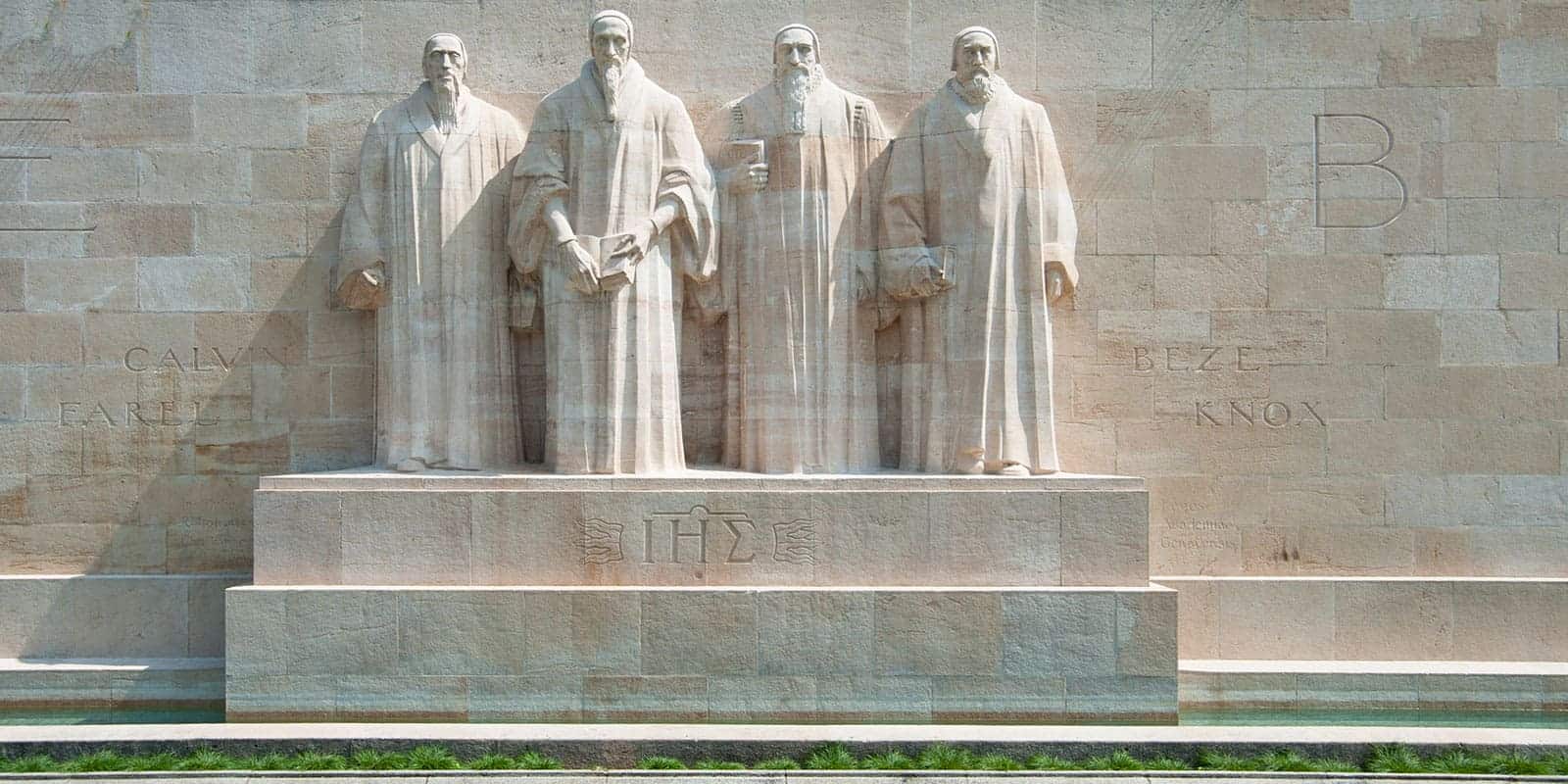
2014 is the 500th anniversary of the birth of Scottish Reformer and Pastor John Knox.Knox was the leader of the Scottish reformation and the founder of the Scottish Presbyterian church.
John Knox had a passion for God’s Word and a passion for Scotland. He was known for his stance against both political and religious tyranny. He did not want to see Scotland come under the dominion of the Roman Catholic church or a French monarch. Instead, he wanted to see it under the dominion of Christ and his Word. His famous prayer was, echoing Hanna’s prayer in the Old Testament, “Oh God, give me Scotland or I die!”
Knox distrusted and worked against absolute monarchs. He did so for theological reasons: God alone is sovereign. “Kings have not an absolute power,” he said, “but their power is limited by God’s Word.” They are subject to laws.
The Scottish reformer also rejected any religion not based exclusively on the Bible. He wanted to move the whole basis of salvation from the church back to Christ and see his country turn to the pure gospel and scriptural truth.
John Knox is not popular in a politically correct age like ours. But we must see him as a Jeremiah-like reformer.
He had the stamp of a prophet about him. He has been called “a tough man for a tough age.” Like Jeremiah, his mission was to “throw down and build up.” This was not a job for a man of mild spirits and genteel manners, (and as we know, Knox was not known for his diplomacy or tact). It required reproving public sin and contending for public godliness.
Knox was not afraid to denounce a monarch. He boldly criticized Emperor Charles V, Queen Mary of England, and Mary Queen of Scots. Nor was he afraid to stand against the errors and idolatry of the church.
We first learn of John Knox as a Catholic priest who was attracted to the teachings of Luther and the preaching of Protestant George Wishart. Wishart, suspected of heresy because he read the Greek New Testament and talked about being saved by grace alone, was burned at the stake in 1546. This deeply impacted Knox.
Knox came to believe that the church of Rome had greatly degenerated from apostolic times. Its priesthood was ignorant and corrupt. Its services in Latin were foreign to the people. Knox came to criticize what he called an “idolatrous mass” because it was presented as a repetition of the once for all sacrifice of Christ. So by 1546, Knox was firmly committed to the Protestant cause.
Shortly thereafter he was captured by the French and made a galley slave on a ship.
This became a watershed event in his life and only confirmed him in his new convictions. When he was released 19 months later, Knox fled to England where he joined the Reformed forces and worked with Thomas Cranmer. For two years Knox served as an itinerant evangelist. When Catholic Mary Tudor, known as Bloody Mary, came to the throne in 1553, there was a systematic and ruthless persecution of Protestants. Knox fled to Frankfurt and then Geneva where he came under the influence of John Calvin.
During his exile, Knox pastored British refugees in the first English congregation in Geneva. This church became the cradle of Puritanism. While there, Knox was involved in the production of a new translation of the Bible, completed in 1560, known as the Geneva Bible. It became the first English Bible to be published in Scotland.
When Knox returned to Scotland in 1559, he brought all this experience with him. Knox worked for doctrinal and church reforms. His efforts turned millions to a renewed awareness of God’s sovereignty, the authority of Scripture and justification by grace alone.
At the time, Mary Queen of Scots wanted to make Scotland subject to France, to restore the church of Rome, and to crush Protestantism.
In response, Knox’s voice thundered from Scottish pulpits, and he propagated a theory of godly revolution which taught that there is a case for rebellion against a monarch who becomes idolatrous and imposes her rule on the people.
It was said that Mary feared Knox preaching more than the armies of England!
Eventually, Scottish leaders rebelled against Queen Mary and called on Elizabeth I, the Protestant queen of England, to help. So this was not simply a civil war, it was a war of Scotland and England against France, and a war of Catholic powers against Protestant powers.
The war lasted until 1560 when the people of Scotland made a covenant for the reformation of religion according to God’s Word.
With the Treaty of Edinburgh, all French troops withdrew and Protestantism triumphed. Knox helped draft the Scottish Confession of Faith and Book of Discipline for the church that he believed reflected the New Testament church. But these documents were also a kind of manifesto for a Christian commonwealth. They led to the founding of both a self-governing church and the single most democratic system of government in Europe.
The Reformation in Scotland also promoted schools for teaching Scripture and a Reformed catechism.
This became the beginning of a national system of education with a school in every parish. It eventually led to Scotland having the highest literacy rate in the world.
After the treaty, Queen Mary abdicated and the Reformed Protestant church of Scotland was official. Knox’s dreams for the independence of his church and country were finally realized.
He then returned to what he considered his primary duty—preaching and pastoring at St. Giles, the High Kirk (church) in Edinburgh.
His dying prayer was that the Lord would raise up faithful pastors who would take charge of the church.
Little did he know that many Scots would immigrate to the American colonies, bringing with them both a distrust of the absolute powers of monarchs, and a commitment to a Reformation faith.
Which is why his 500TH birthday, in an era of theological confusion and imperial presidents, still matters.
